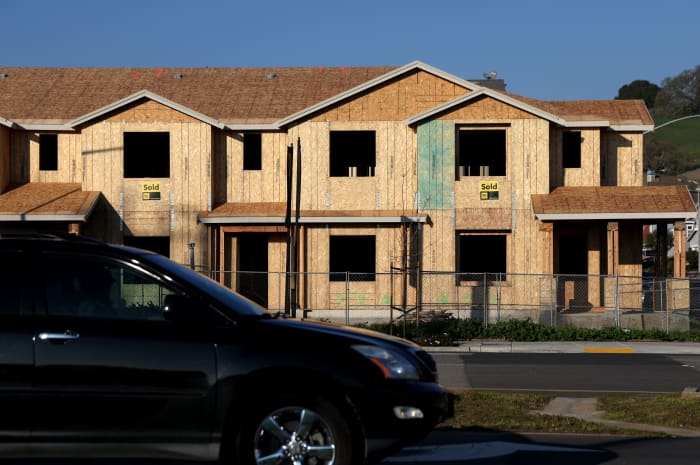Building a home is a complicated business.
Despite the shortage of housing in the U.S., it’s been challenging for builders to quickly ramp up production to meet demand.
That’s because of a variety of factors — from navigating lumber tariffs to a shortage of labor. And with interest and mortgage rates rising, on top of inflation making building materials more expensive, homebuilder sentiment has plunged, as would-be buyers take a pause.
To illustrate the five key drivers that influence homebuilders, the National Association of Home Builders’ chief economist Robert Dietz shared a list of the “5 L’s” of homebuilding with MarketWatch.
Every single one of these factors is presenting a challenge to builders at the moment, and that in turn is putting pressures on homebuyers, renters and others caught up in America’s housing sector.
Labor
It’s tough to find construction workers. So much so that one Harvard expert said the solution to fixing the shortage was to entice more women to join the construction sector, and to reform immigration laws so more immigrants could get construction jobs, too.
The construction industry needs about 650,000 more workers on top of the normal pace of hiring to meet demand this year, according to analysis by Associated Builders and Contractors.
In 2023, the industry will need 590,000 more new workers to keep pace with demand, even after assuming construction spending growth slows.
“Labor is a bloodbath,” Brian Tucker, who owns Tucco Home Improvements in Peyton, Colorado. His company does contracting and remodeling work.
“It’s hard to find anyone who is willing to work, and even then, it’s $ 30 an hour,” Tucker added, “which is not feasible for hauling drywall out of homes.”
Lumber (and other materials)
Lumber prices remain elevated. They’ve been on a wild ride over the last year, hitting new highs and then plunging sharply. But overall, the increase in softwood lumber prices have added $ 14,345 to the price tag of the average new single-family home, the NAHB estimated in a blog post, and $ 5,511 to the market value of an average new apartment.
If you’re renting, your household’s paying an additional $ 51 a month in rent for your new apartment, thanks to lumber.
Lending
Interest rates affect homebuilders’ and developers’ borrowing costs. And with the Federal Reserve hiking rates four times since March, that’ll increase expenses for builders, on top of homeowners.
“Higher rates affect supply and demand,” Dietz said.
“The demand impact is obvious,” he added. Higher mortgage rates are pushing would-be homeowners to wait on buying a home. That’s also affecting demand, which in turn, slows homebuilders’ businesses. The average rate on the 30-year fixed-rate mortgage was 5.3% for the week ending July 28, according to Freddie Mac.
But higher interest rates also “means the cost of builder and developer loans increase, which make it more expensive to develop land and build homes,” Dietz stressed. “People often forget this.”
Laws
Regulations — from zoning approvals to fees to labor requirements — can also add to builders’ costs. The NAHB in May estimated that regulations imposed by the government added roughly $ 94,000 to the final price of a new single-family home built for sale.
There’s also the issue of NIMBYism, where locals resist new development for fear of increased traffic, pollution and other concerns, which also limits where homebuilders can start new construction.

The increase in softwood lumber prices has added $ 14,345 to the price tag of the average new single-family home, the NAHB estimated.
(Photo by Justin Sullivan/Getty Images)
The nation is short on homes. But it hasn’t always been this way, which most Americans know.
Christopher Herbert, managing director of Harvard’s Joint Center for Housing Studies, recalled in an interview with MarketWatch that in 2006, homebuilders built more homes than needed.
But after the Great Recession, the regulatory environment shifted. Jurisdictions became more restrictive, and “there’s a lot more caution on the financing side,” he explained.
Lots/land
Lastly, builders need developed lots to build on, but there’s been a shortage of that. Last October, in an NAHB survey, 76% of builders reported that the overall supply of developed lots in their areas was low to very low, which was an all-time record.
In its July survey of builders, the group also found that 13% of builders said they were cutting home prices in June to bolster sales, or to stem the flow of cancellations.
Write to MarketWatch reporter Aarthi Swaminathan at aarthi@marketwatch.com
